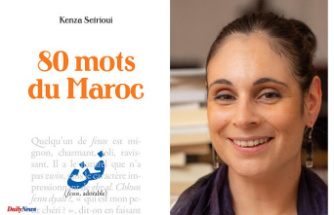With another key interest rate increase by the ECB by 0.5 to 2.5 percentage points, the prospects for savers have improved further. In return, however, loans are also becoming more expensive, which is particularly noticeable in real estate financing.
The European Central Bank (ECB) has again reacted to the high inflation rates in the euro area and increased the so-called main refinancing rate by half a percentage point to 2.5 percent. And: The Governing Council of the ECB is holding out the prospect of further interest rate hikes. The next council meeting will take place in early February 2023. That sounds good for savers at first, after all, zero and low interest rates have been grumbled for years.
And without those who welcome the ECB's move to spoil the mood, it should not go unmentioned that inflation rates in the euro zone and in Germany remained almost unchanged in November. Which means that the interest rates that can be earned for savings are still very negative in real terms.
However, many people are not only savers but also borrowers. Real estate buyers in particular have benefited from the fantastic conditions of recent years when financing their properties. Even if that drove up demand and - because of the limited supply - prices.
Various comparison portals have taken a critical look at what the increase in key interest rates means for consumers. The areas of construction financing, investments, current accounts and installment loans were considered.
Daily and fixed deposit accounts
The ECB decisions of July, September and October had already caused interest rates to rise on call money accounts, and a significant increase in interest rates was also noticeable for newly concluded fixed-term deposits. According to the financial comparison portal Biallo, interest rates are higher than they have been since early 2009. All comparison portals are currently assuming that the trend towards higher interest rates will continue and possibly accelerate over the course of the year. For a one-year fixed-term deposit with German deposit insurance, an interest rate of 2.11 percent can currently be obtained (Bank11). With money houses in the EU it is up to 2.84 percent (Klarna). According to Biallo, there are up to 3 percent or 3.25 percent (both Kommunal Kredit Invest) for terms of two to three years. And if you can currently spare your money for 10 years, you even get up to 3.10 percent interest in Germany (SWK Bank).
Fixed deposit accounts in comparison
In the current environment, savers can use the staircase strategy. In this case, the entire savings are not in a single fixed-term deposit account, but are divided into different accounts with different maturities. Flexibility is therefore important in the current environment, so savers should not put all their wealth in long-term investments.
For overnight money, new customer offers for 2 percent are already available from a German deposit insurance (ING - limited to four months).
Daily money accounts in comparison
installment loans
At the same time, as mentioned, interest rates on consumer loans are also rising. Because when fixed-term deposit interest rates rise, installment loans have always been expensive. As expected, the interest rates for installment loans have increased from an average of 4.6 to 6.0 percent since the ECB's interest rate increases.
For 2023, FMH Finanzberatung expects the development to continue at the same pace, so that interest rates will probably rise by another 0.75 percentage points by Easter. A comparison of the conditions is therefore more worthwhile than ever. Because the range of offers is very large. If you look closely, you will still be able to find offers for less than six percent in the future, even if the average interest rate in the spring of the coming years is likely to be between 6.5 and 6.75 percent. For comparison: the average for the past 20 years is 6.53 percent.
Even before the interest rate hike in September, the Check24 portal observed a significantly larger range of interest rates. This means that banks are more selective about borrowing customers, especially when budgets are tight. Which makes a loan comparison even more important. For example here:
Installment loans in comparison
building interest
Interest rates have more than quadrupled since the beginning of the year. According to FMH, the average interest rate for a five-year loan is currently 3.60 percent, for ten years customers only pay 3.50 percent, 15 years fixed cost 3.70 percent and 20 years fixed there for 3, 78 percent. The ECB decision only indirectly affects building interest rates. The most important indicator are the interest rates for ten-year Bunds. Because they largely determine the yields for Pfandbriefe, which in turn are used by banks to refinance real estate loans. But Check24 had already made a commitment in September and predicted that the average home loan would definitely increase by a few thousand euros within the term by the end of this year. In addition, banks are acting more restrictively when it comes to lending. In the case of current mortgage loans, on the other hand, nothing changes.
Anyone who is faced with the decision for a longer or shorter fixed interest rate must therefore consider how interest rates will develop. If you assume that interest rates will be significantly lower in five years than they are today, a short term is recommended. On the other hand, if one assumes that interest rates tend to move upwards, a long-term hedge of 20 years would make sense. Security costs money, but creates long-term certainty about one's own burden.
Building loan interest comparison
Interest on the checking account
If you're feeling a little tight, you often overdraw your account and use the overdraft facility to overcome the bottleneck. Which is usually not a good idea. Especially in times of rising interest rates. Apart from that, the overdraft interest will also rise due to the turnaround in interest rates, since the financial institutions are based on the ECB key interest rate. The current average interest rate on an overdraft facility is currently 10 percent. The interest for the overdraft of the overdraft facility is over 12 percent. Apart from that, debtors should be aware that the overdraft facility for the checking account is usually the most expensive loan from the bank. You should only use it exceptionally and for a short time.
Checking Account Comparison












